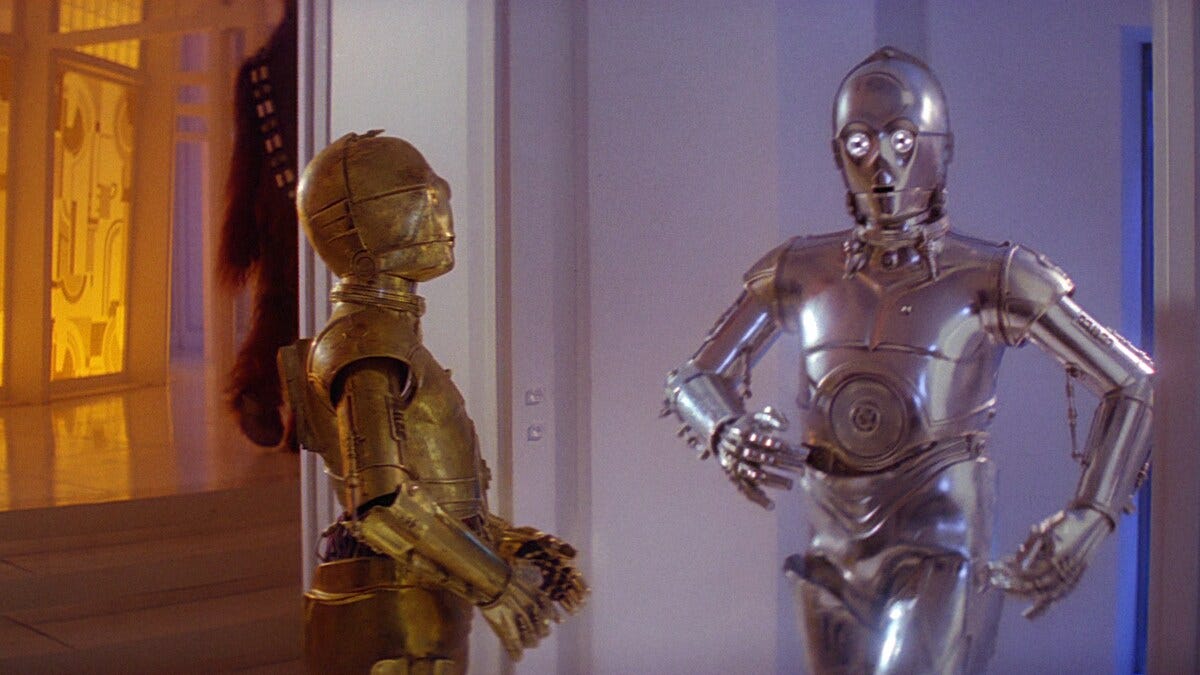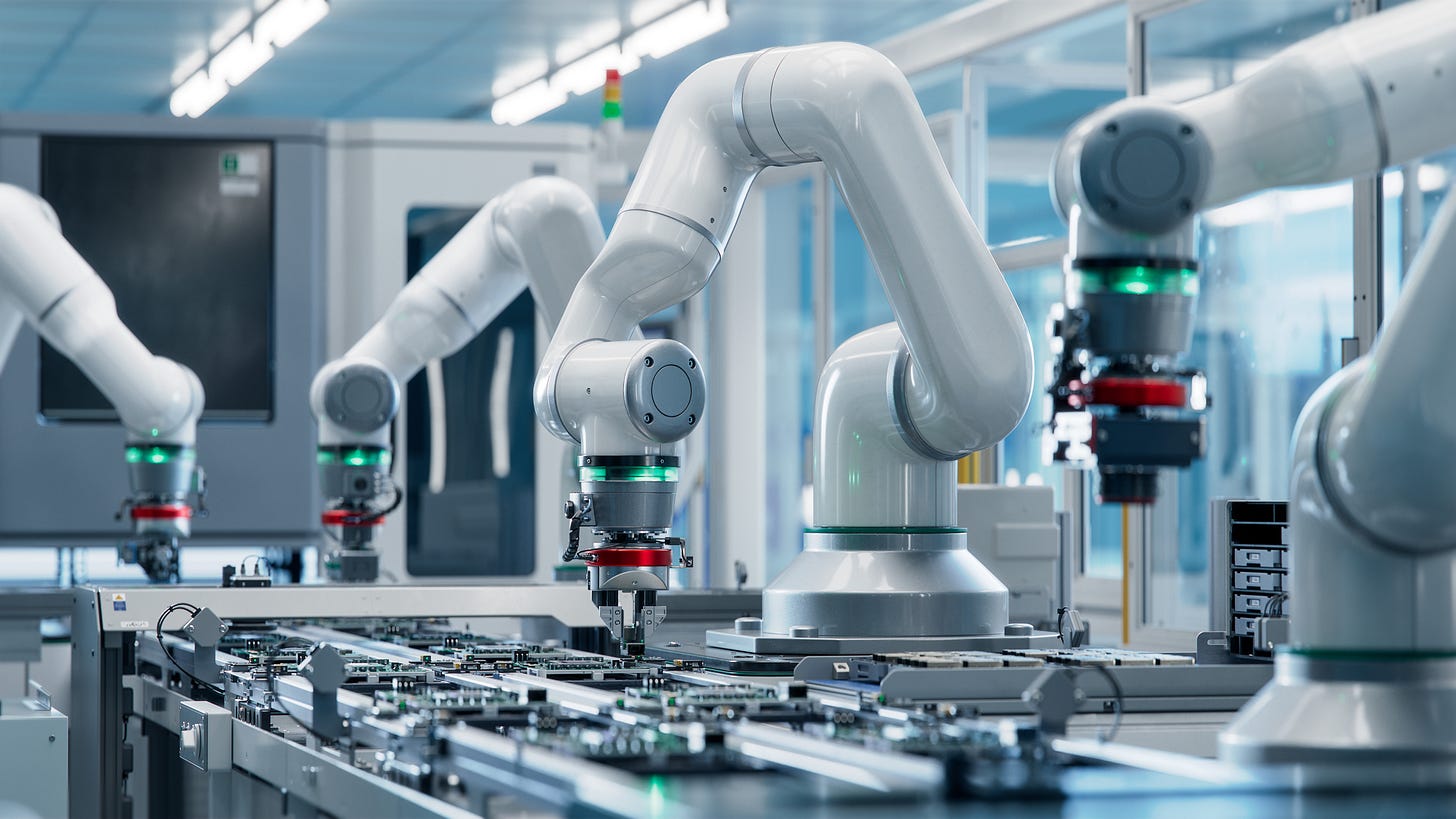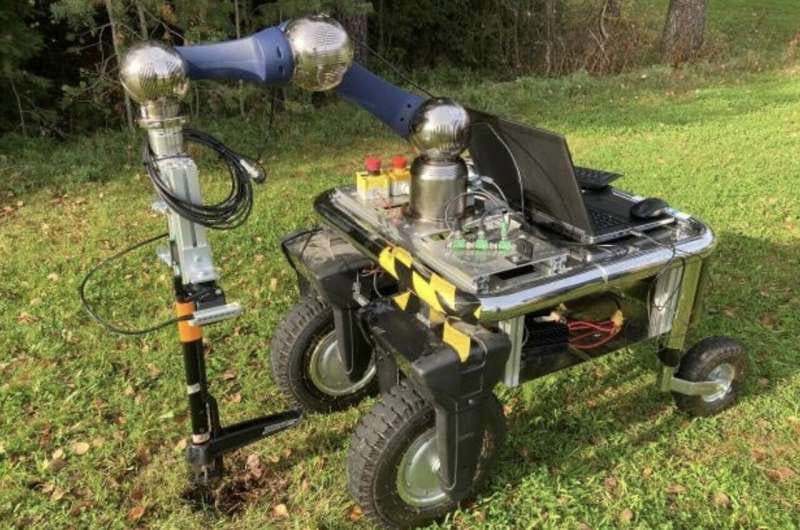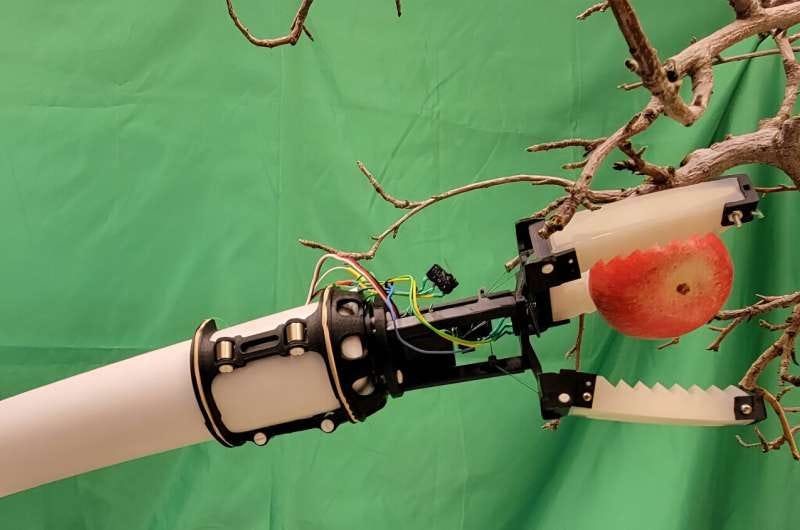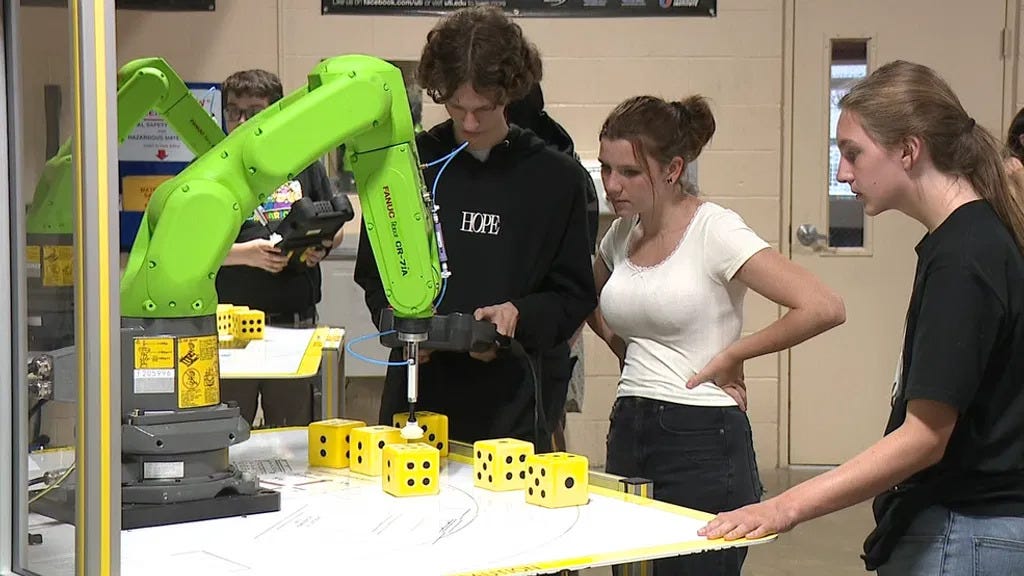Could The "C-3PO/R2-D2 Ratio" Indicate Humanoid Readiness For An Industry?
Preference for C-3PO over R2-D2 may indicate if an industry's workers are ready to embrace humanoids in their workspace
Aaron’s Thoughts On The Week
"Don't get technical with me." --C-3PO
Last week’s column, “The Human Form Is Flawed, So Why Do We Want Humanoid Robots?” hit a nerve. Overall, it got a lot of people agreeing with the overall takeaway. This is not to say that some disagreed, which I welcome, but overall, the majority agreed. The piece also generated the most single-day traffic to the website and is on pace to go down as the most-read column in Six Degrees of Robotics’ 11-month history.
Now, to be clear, I am in no way an “anti-humanoid” robot person. I think that in certain use cases, they make a lot of sense. In a recent advisory with a client, my team and I recommended for one of their use cases; they actually consider a humanoid long-term to perform the task. This was because they would maintain the environment and equipment designed for humans in the future. Based on that, a humanoid made sense because they didn’t require more speed or accuracy.
My issue currently with humanoid robots is that too many firms and their cheerleaders are starting to make claims and promises that those of us who have a little bit more knowledge of the current state of technology and the current state of what business leaders are trying to address are not only incorrect, they are getting to the point of being absurd. These are the same types of claims that got the Autonomous Vehicle industry into trouble and now are getting some AI companies into the same position of losing the public’s trust of overpromising and underdelivering.
It is tough to take anyone seriously who says there will be over a Billion humanoid robots by 2040. The International Federation of Robotics (IFR) reports that in 2022, the world hit a new record with 3.9 Million operational industrial robots worldwide.
Robot sales for consumer use reached about 5.1 million units in 2022, with the majority being used for domestic household tasks such as floor cleaning and lawn mowing. For additional context, there are only 1.47 billion vehicles in the world, with China reporting the most at around 415 million registered vehicles on the road.
If all the robots in the world were converted into humanoid robots, we would still need to maintain a growth rate of over 15% every year to reach 1 billion humanoid robots by 2040. Now to be fair, according to the IFR, the global industrial robot market has seen substantial growth. For instance, robot sales doubled from 2013 to 2017, implying a compound annual growth rate (CAGR) of about 15% during that period (IFR International Federation of Robotics). And in 2021, the number of new industrial robot installations reached an all-time high, with a 31% year-on-year growth, setting a new record of 517,385 units installed globally. However, this spike represented the recovery from a slight dip during the pandemic and is seen as a bit of a black swan event coming out of a global pandemic.
So, 15% growth, if not higher, is achievable. However, that was if we already had millions of humanoids deployed, which we don’t. Also, every robot firm would need to focus on building humanoids, which they won’t.
So, many may think that rapid growth is nothing new for the robotics industry, therefore the “one billion” number is possible. It is hard to buy it, because quite frankly not everyone is sold on humanoid being the best form or product to achieve everything we need robots to do. To think that way is just plain simple hubris.
The Cautionary Tale of Humane’s Ai Pin
This week, the New York Times dropped an article about the disaster that is Humane’s Ai Pin. When Humane first showed off their new AI-enabled device, the responses were very similar to humanoid robots in a way. The San Francisco company had raised $240 million from powerful Silicon Valley investors, including Sam Altman, OpenAI’s chief executive, and Marc Benioff, Salesforce’s chief executive. They valued the start-up at $1 billion based on its enormous ambition and promise. Humane spent five years building a device to disrupt the smartphone, only to face difficulties.
I know that when I first saw the video, I thought that the device made no sense, and if it was supposed to replace my smartphone, it appeared severely lacking in achieving that. And the marketplace told them that. As of early April, Humane had only sold around 10,000 Ai Pin units, far below its target of 100,000 for the year. The company has experienced employee departures and changed its return policy to manage canceled orders. Additionally, it warned customers to stop using the Ai Pin charging case due to a fire risk associated with its battery.
According to a New York Times article, many current and former employees stated that the leadership favored positivity over criticism, which led them to ignore warnings about Ai Pin's poor battery life and power consumption. They claimed that a senior software engineer was fired after raising questions about the product, while others left out of frustration. It other words, the founders didn’t like to hear criticism of their product and instead of listening, they ignore it and drove the company towards a massive failure.
Current and former employees said the Ai Pin had issues initially, which reviewers later picked apart. The device's laser display consumed a lot of power, causing it to overheat. Humane executives would chill the gadget on ice packs before demonstrations to address this. The founders promised software improvements would reduce power use, but the device's battery didn't last long. To address this issue, Humane provided customers with a backup battery and charging case, but this increased the product's price by over $100.
On April 11, reviews in The New York Times, The Wall Street Journal and The Verge blasted the Ai Pin’s shortcomings. Marques Brownlee, a tech reviewer on YouTube with 19 million subscribers, headlined his review “The Worst Product I’ve Ever Reviewed … for Now.”
Not only does it appear that Humane rushed their product out when it clearly was not ready, but they also failed to listen to those who were trying to provide them with advice and insight on what they should be working on before they ticked off a bunch of customers. I would even wonder if this company did any customer discovery to see if they were even building a product that the market wanted to begin with or were they too deep in their own little bubble of tech bros who would have no problem wasting hundreds of dollars and paying a monthly fee for something that appeared to be “cool.”
It is easy to see many humanoid companies and their cheerleaders following the same path. Are they building a product that the marketplace wants, or are they just listening to their echo chamber of robot fans who, for their own reasons, want humanoid robots even though they can’t point to a use case where they make more sense over traditional robot forms and designs?
Asking Potential End Users of Humanoids About C-3PO and R2-D2 May Help
In 1986, The Economist introduced the Big Mac Index to help communicate the Purchasing Power Parity (PPP) between two currencies. PPP compares the price of a market basket of goods in one location to another, considering factors like tariffs and transaction costs. Everyone appears to know what a Big Mac is and roughly how much it costs, so The Economist used it as their “basket of goods” even though it was only one item. Since its introduction, the magazine has published the Index each year.
At the recent ICRA conference in Japan, I know some of my fellow Americans commented that everything was “cheaper” in Japan than in the States. If we had looked at the Big Mac Index ($5.35 in the US vs. $2.91 in Japan), we would have seen that the US Dollar could buy much more in Japan. To be honest, the US Dollar hit an all-time high against the Japanese Yen during ICRA week.
The Big Mac Index is simply a data point that cuts through the economic noise. It brings us something familiar to help show if we should expect to pay more or less based on our country’s currency vs. the country’s currency we are visiting.
So can we do the same with Humanoids?
In my article last week, I discussed the C-3PO vs. R2-D2 analogy. If you asked a person which robot (C-3PO vs. R2-D2) they would want to work around or be their personal robot, you would potentially see where they stood on the humanoid versus typical robot scale. I’ve actually done one of these polls about every 6-months to see where we are.
Well, I did another one of those polls on LinkedIn this week, and like always, the overall final number came back about the same. However, digging deeper into the individual answers, I noticed something starting to confirm where humanoids may have a chance.
Overall, once again, R2-D2 completely smoked C-3PO in preference amongst all those who participated in the survey. However, as I started to look at the professions of those who voted and what industries they worked in, there was some hope for C-3PO. Amongst the educators and medical professionals I could identify in the data, C-3PO did much better. He did still lose but by much smaller margins.
For the medical professionals I could identify, R2-D2 only won 55% to 45%. For educators, he only beat out his humanoid friend by 4 percentage points (52% to 48%). There has been a lot of research into using humanoid robots in education, especially with autistic children. The same can be said about healthcare, where countries with rapidly aging populations are testing robots more and more.
So, in a way, I was not too surprised with the results. However, I do want to take a deeper dive into this, potentially taking a more focused approach to individual industries. I would also love to see others look at this, too.
Introducing the C-3PO/R2-D2 Ratio
So, in closing out this week’s column, I ask humanoid companies and organizations to start using the C-3PO/R2-D2 Ratio. If you think that your humanoid robot would be great in a specific industry, ask those in the industry if they could only have one robot to help them at work or home. Which robot would they pick—C-3PO or R2-D2?
If the ratio is close to 1 to 1, then you should consider introducing your humanoid to that industry. If it is 1 to 2 (every 2 votes for R2-D2 vs. 1 vote for C-3PO), then you may want to pass. If it is 2 to 1 (C-3PO gets 2 votes for every vote for R2-D2), then you should put all of your chips and resources into cracking that industry.
Again, this is in no way a scientific poll and is a bit silly. However, sometimes it is these small things that help us get a read on the room and what people are thinking without them trying to just be nice about your idea and tech. You can also follow up on why they prefer one over the other. This will allow you to see what your robot would need (or not need) to be successful in that industry.
So, while I don’t expect the C-3PO/R2-D2 Ratio to become the next big thing in robotics, I do hope it opens up the conversation and starts to break through some of these bubbles that people who have gone all in on humanoids start to think about more. That is ultimately what I want to see. Humanoid robots are some of the most amazing robots we are working on now. They do have a place in our world and are going to be needed. However, we need to be brutally honest about what they can and cannot do and what our society’s acceptance level of them currently and going forward. Using our shared cultural references in two robots that many of us grew up on and many are still growing on, helps give us a more level view between those in the robotics industry and those that will use our products. It breaks down our own information and bias bubbles and puts us on a shared cultural point that we all can have opinions about.
Robot News Of The Week
How cutting-edge computer chips are speeding up the AI revolution
In March, Nvidia's CEO, Jensen Huang, unveiled the Hopper 'superchip' and the Blackwell chip at a packed stadium in San Jose, California. The Hopper had dominated in AI tests, and now the Blackwell promises even greater performance. Nvidia's market value has soared, and it now leads in AI chip sales.
Robot sales in North America dip 6% in Q1
The Association for Advancing Automation (A3) reported that robot sales in North America were down 6% in the first quarter of 2024 compared to the same period in 2023. A3 attributed the 2023 slowdown to various factors including a slow U.S. economy, higher interest rates, and over-purchasing of robots in 2022. A3 stated that non-automotive customers are continuing to grow their adoption of robots, showing the expanding impact of automation across different industries. It's important to note that A3 only collects sales data on traditional industrial robots and doesn't include data about autonomous mobile robots or collaborative robotic arms.
Palms West Hospital to build 5-story tower for robotics surgery
HCA Palms West is a leader in robotic surgery in South Florida. The hospital performs over 1,200 of these procedures every year, averaging three to four each day. Since 2010, the hospital has completed over 20,000 robotic surgeries. In 2022, HCA Palms West became the first hospital in Palm Beach County to receive accreditation from the nonprofit group Surgical Review Corp. as a center of excellence in robotic surgery.
Robot Research In The News
A weeding robot that can autonomously remove seedlings
Robotic systems are being deployed in various settings worldwide, including agriculture, where they can tackle tasks such as the removal of damaging weeds. Researchers at VVT Technical Research Centre of Finland Ltd have developed a robot that can autonomously remove an invasive weed called Rumex longifolius, which is harmful to livestock.
The robot uses GNSS navigation and 3D computer vision to detect weeds. The researchers have tested it in real pasture fields and found it to be effective, although environmental factors can affect its weed detection capabilities. They aim to further improve its detection capabilities for potential commercialization and use by farmers.
New robotic gripper for automated apple picking developed
Researchers at Washington State University have developed a robotic gripper that can gently pick the majority of apples from trees without causing damage. The gripper, part of a robotic system designed for fruit picking, aims to help alleviate labor shortages on Washington farms. The gripper, weighing about two-thirds of a pound, uses three cables to move 3D-printed hard plastic and silicone rubber-tipped fingers, and costs about $30 to produce. It successfully grabbed over 87.5% of apples in an orchard without damaging them.
Robot Workforce Stories Of The Week
Alabama high students participate in pilot robotics boot camp
Oxford High School students are participating in a week-long robotics boot camp. The camp, held at the high school's modern manufacturing building, is the pilot program for a statewide initiative.
The boot camp was done with the Alabama Robotics Technology Park and the Alabama Industrial Development Training (AIDT) Division. The agencies provided the equipment and training for the camp, offering students hands-on experience in robotics handling and programming. Students are programming robots to complete modern manufacturing tasks, engage in team-based projects, and interact with industry professionals.
AIDT Executive Director Ed Castile expressed excitement about the initiative, recognizing the increasing demand and lucrative salaries in robotics and automation, and looking forward to collaborating with the future workforce.
UCF’s New Master’s Degree Creates Pathway to Careers in Robotics for Students
The University of Central Florida is launching a master’s in robotics and autonomous systems in Fall 2024. The program covers various disciplines, including electrical and electronic hardware, machine learning, autonomous control, and computer vision. Graduates can pursue careers as robotics engineers in different industries and help meet the workforce needs of local companies like Lockheed Martin, L3Harris, and Siemens. Prospective applicants should have a 3.0 GPA or above and an undergraduate degree in a STEM-related discipline. Some knowledge of programming languages, engineering statistics, linear algebra, and multivariate calculus is preferred.
Robot Video Of The Week
According to a group of researchers at the University of Tokyo, a humanoid robot named Musashi has been developed and trained to drive a small electric car through a test track. The robot is equipped with two cameras for "eyes," mechanical hands, and anti-slip "feet" to control the car's movements.
Upcoming Robot Events
June 24-27 International Conference on Space Robotics (Luxemborg)
July 2-4 International Workshop on Robot Motion and Control (Poznan, Poland)
July 8-12 American Control Conference (Toronto, Canada)
Aug. 6-9 International Woodworking Fair (Chicago, IL)
Sept. 9-14 IMTS (Chicago, IL)
Oct. 1-3 International Robot Safety Conference (Cincinnati, OH)
Oct. 7 Humanoid Robot Forum (Memphis, TN)
Oct. 8-10 Autonomous Mobile Robots & Logistics Conference (Memphis, TN)
Oct. 14-18 International Conference on Intelligent Robots and Systems (Abu Dhabi)
Oct. 15-17 Fabtech (Orlando, FL)
Oct. 16-17 RoboBusiness (Santa Clara, CA)
Oct. 28-Nov. 1 ASTM Intl. Conference on Advanced Manufacturing (Atlanta, GA)
Nov. 22-24 Humanoids 2024 (Nancy, France)






